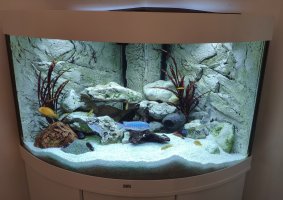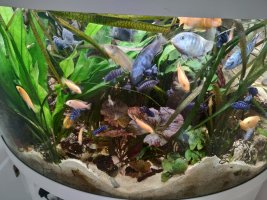Vsevolod Stakhov
Member
Hello, I have recently conducted a simple hobbyst experiment to test different methods of 'quick' tank cycling using the following approaches:
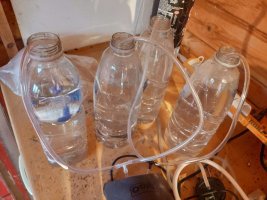
Then I have tested the water using API NH4 (saliciate) test, ensuring that the initial NH4 levels were the same.
So the first test was for the following four candidates:
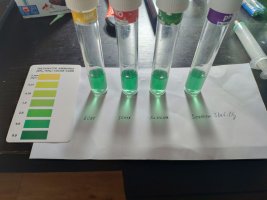
Nitrification has started visually from the day 3:
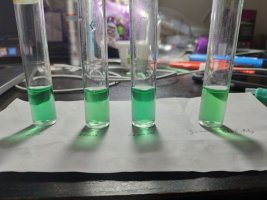
After 7 days I had the following picture (control, soil + nitrite, gunk, stability):
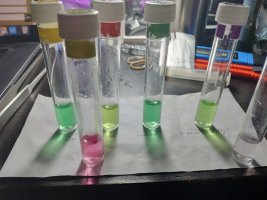
I have added nitrite tests for two leaders: garden soil and Seachem Stability. It seems that garden soil was the winner on ammonia -> nitrite stage but failed badly on nitrite -> nitrate stage. Seachem Stability removed almost all ammonia and almost all nitrite. That was quite surprising.
Subsequently, I have tested 4 other approaches:
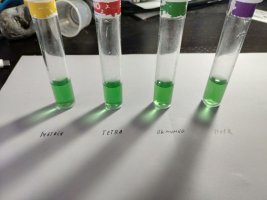
Nitrification has started roughly at the same time - on day 3 (a poor photo, sorry):
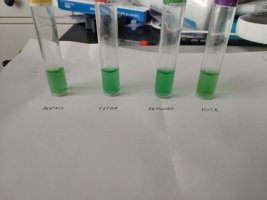
After 7 days results were the following (matrix, tetra + nitrite, gunk, helx):
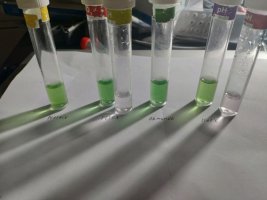
So HelX has won this stage but probably because it was able to float in the aeration bubbles unlike, for example, Matrix. Tetra Safe Start was not so impressive as well as filter gunk (I have also measured nitrites for it as you see, and their level was almost zero). HelX element was able to oxidise both the vast majority of ammonia and almost all nitrite - similar to Seachem Stability in the previous experiment.
In conclusion, it seems that bacteria matrix is more important than the bacterias themselves. So undestructed biofilm acts much faster and better than everything else (especially untreated sample). I'm not quite sure what happened with the garden soil sample with regard to nitrites. I can only suspect that there was something wrong with the nitrtite oxydising bacterias when they were moved to the submerged conditions (or those bacteria live somewhere deeper in the soil).
This experiment was done mostly for fun but I think it might be somehow useful for others.
- Add bacterias from a bottle:
- Seachem Stability
- Tetra Easy Start
- Add some gunk from the existing filter:
- From prefilter sponge
- From biomedia sponge
- Add some soil from garden
- Add filter media from the existing filter:
- HelX plastic media
- Seachem matrix media

Then I have tested the water using API NH4 (saliciate) test, ensuring that the initial NH4 levels were the same.
So the first test was for the following four candidates:
- Control (nothing added)
- Garden soil (2 pea size pieces)
- Filter gunk from the prefilter
- 1ml of Seachem Stability

Nitrification has started visually from the day 3:

After 7 days I had the following picture (control, soil + nitrite, gunk, stability):

I have added nitrite tests for two leaders: garden soil and Seachem Stability. It seems that garden soil was the winner on ammonia -> nitrite stage but failed badly on nitrite -> nitrate stage. Seachem Stability removed almost all ammonia and almost all nitrite. That was quite surprising.
Subsequently, I have tested 4 other approaches:
- Seachem Matrix element from a working filter
- Tetra SafeStart (5ml in 1L bottle)
- Filter gunk from HelX biomedia washed out by tank water
- HelX element from a working static media filter:
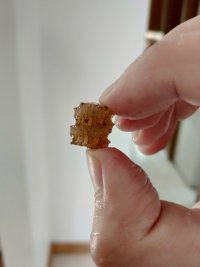

Nitrification has started roughly at the same time - on day 3 (a poor photo, sorry):

After 7 days results were the following (matrix, tetra + nitrite, gunk, helx):

So HelX has won this stage but probably because it was able to float in the aeration bubbles unlike, for example, Matrix. Tetra Safe Start was not so impressive as well as filter gunk (I have also measured nitrites for it as you see, and their level was almost zero). HelX element was able to oxidise both the vast majority of ammonia and almost all nitrite - similar to Seachem Stability in the previous experiment.
In conclusion, it seems that bacteria matrix is more important than the bacterias themselves. So undestructed biofilm acts much faster and better than everything else (especially untreated sample). I'm not quite sure what happened with the garden soil sample with regard to nitrites. I can only suspect that there was something wrong with the nitrtite oxydising bacterias when they were moved to the submerged conditions (or those bacteria live somewhere deeper in the soil).
This experiment was done mostly for fun but I think it might be somehow useful for others.


